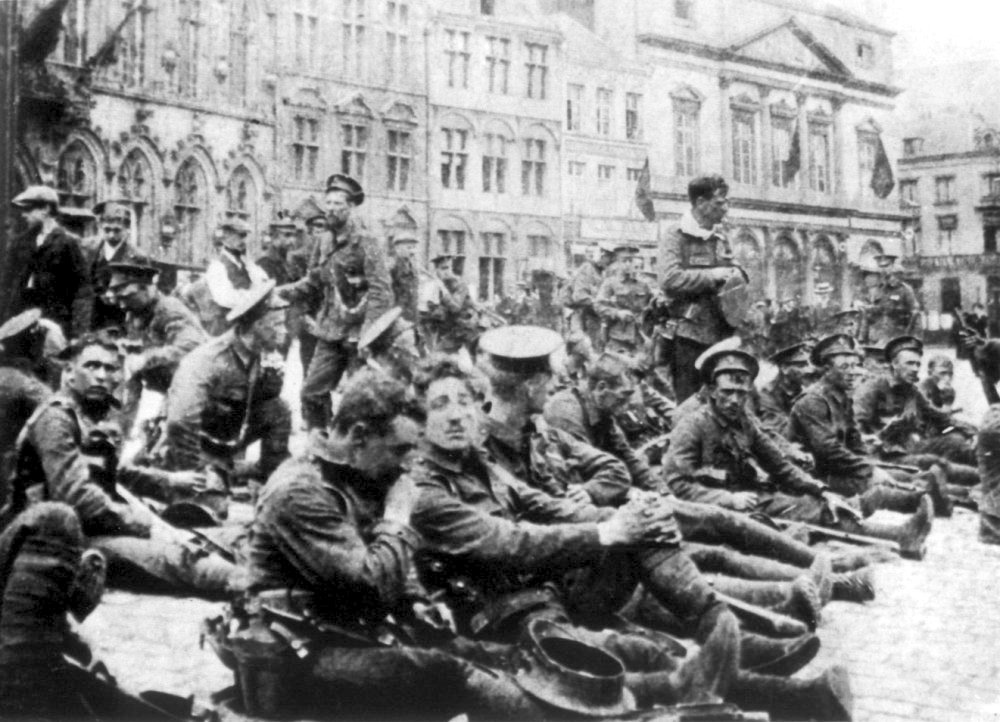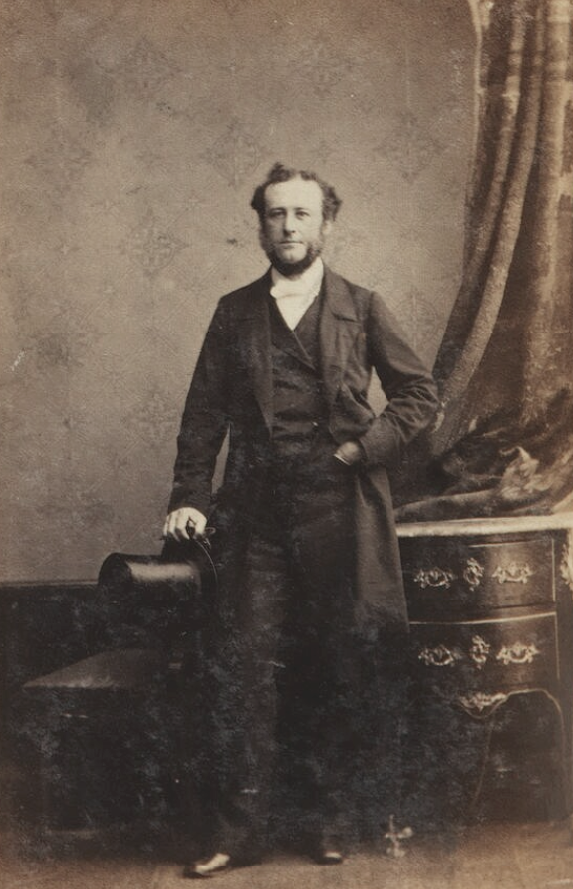|
Joseph Hubert Priestley
Joseph Hubert Priestley (; 5 October 188331 October 1944) was a British lecturer in botany at University College, Bristol, and professor of botany and pro-vice-chancellor at the University of Leeds. He has been described as a gifted teacher who attracted many graduate research students to Leeds. He was the eldest child of a Tewkesbury head teacher and the elder brother of Raymond Priestley, the British geologist and Antarctic explorer. He was educated at his father's school and University College, Bristol. In 1904, he was appointed a lecturer in botany at the University College and published research on photosynthesis and the effect of electricity on plants. He was elected a fellow of the Linnean Society, and in 1910, he was appointed consulting botanist to the Bath and West and Southern Counties Society. In 1911, he married Marion Ethel Young at Bristol, and in the same year, he was appointed professor of botany at the University of Leeds. He served in the British Army durin ... [...More Info...] [...Related Items...] OR: [Wikipedia] [Google] [Baidu] |
University College, Bristol
University College, Bristol was an educational institution which existed from 1876 to 1909. It was the predecessor institution to the University of Bristol, which gained a royal charter in 1909. During its time the college mainly served the middle classes of Bristol, and catered for young men who had entered a family business and needed a greater understanding of scientific topics. Origins The history of University College, Bristol and ultimately the University of Bristol can be traced as far back as 1872 and the attempts of John Percival, a local educationalist and headmaster of Clifton College, to press for the creation of a college. Percival was a supporter of the education of women, having founded an Association for the Promotion of the Higher Education of Women in 1868, and an Association for the Promotion of Evening Classes a year later. Percival's strong Christian religious views (he later became a bishop) influenced his views on education, in that he believed that ... [...More Info...] [...Related Items...] OR: [Wikipedia] [Google] [Baidu] |
Vegetative Reproduction
Vegetative reproduction (also known as vegetative propagation, vegetative multiplication or cloning) is any form of asexual reproduction occurring in plants in which a new plant grows from a fragment or cutting of the parent plant or specialized reproductive structures, which are sometimes called vegetative propagules. Many plants naturally reproduce this way, but it can also be induced artificially. Horticulturists have developed asexual propagation techniques that use vegetative propagules to replicate plants. Success rates and difficulty of propagation vary greatly. Monocotyledons typically lack a vascular cambium, making them more challenging to propagate. Background Plant propagation is the process of plant reproduction of a species or cultivar, and it can be sexual or asexual. It can happen through the use of vegetative parts of the plants, such as leaves, stems, and roots to produce new plants or through growth from specialized vegetative plant parts. Wh ... [...More Info...] [...Related Items...] OR: [Wikipedia] [Google] [Baidu] |
Botany
Botany, also called plant science (or plant sciences), plant biology or phytology, is the science of plant life and a branch of biology. A botanist, plant scientist or phytologist is a scientist who specialises in this field. The term "botany" comes from the Ancient Greek word (') meaning " pasture", "herbs" " grass", or "fodder"; is in turn derived from (), "to feed" or "to graze". Traditionally, botany has also included the study of fungi and algae by mycologists and phycologists respectively, with the study of these three groups of organisms remaining within the sphere of interest of the International Botanical Congress. Nowadays, botanists (in the strict sense) study approximately 410,000 species of land plants of which some 391,000 species are vascular plants (including approximately 369,000 species of flowering plants), and approximately 20,000 are bryophytes. Botany originated in prehistory as herbalism with the efforts of early humans to identify – a ... [...More Info...] [...Related Items...] OR: [Wikipedia] [Google] [Baidu] |
Order Of The Crown (Belgium)
The Order of the Crown (french: Ordre de la Couronne, nl, Kroonorde) is a national order of the Kingdom of Belgium. The Order is one of Belgium's highest honors. History The Order was established on October 15, 1897 by King Leopold II in his capacity as ruler of the Congo Free State. The order was first intended to recognize heroic deeds and distinguished service achieved for service in the Congo Free State. In 1908, the Order of the Crown was made a national honour of Belgium, junior to the Order of Leopold. Currently, the Order of the Crown is awarded for services rendered to the Belgian state, especially for meritorious service in public employment. The Order of the Crown is also awarded for distinguished artistic, literary or scientific achievements, or for commercial or industrial services in Belgium or Africa. The Order may also be bestowed to foreign nationals and is frequently awarded to military and diplomatic personnel of other countries stationed in (or providing ... [...More Info...] [...Related Items...] OR: [Wikipedia] [Google] [Baidu] |
Distinguished Service Order
The Distinguished Service Order (DSO) is a military decoration of the United Kingdom, as well as formerly of other parts of the Commonwealth, awarded for meritorious or distinguished service by officers of the armed forces during wartime, typically in actual combat. Since 1993 it has been awarded specifically for 'highly successful command and leadership during active operations', with all ranks being eligible. History Instituted on 6 September 1886 by Queen Victoria in a royal warrant published in '' The London Gazette'' on 9 November, the first DSOs awarded were dated 25 November 1886. The order was established to reward individual instances of meritorious or distinguished service in war. It was a military order, until recently for officers only and typically awarded to officers ranked major (or equivalent) or higher, with awards to ranks below this usually for a high degree of gallantry, just short of deserving the Victoria Cross. Whilst normally given for service u ... [...More Info...] [...Related Items...] OR: [Wikipedia] [Google] [Baidu] |
World War I
World War I (28 July 1914 11 November 1918), often abbreviated as WWI, was List of wars and anthropogenic disasters by death toll, one of the deadliest global conflicts in history. Belligerents included much of Europe, the Russian Empire, the United States, and the Ottoman Empire, with fighting occurring throughout Europe, the Middle East, Africa, the Pacific Ocean, Pacific, and parts of Asia. An estimated 9 million soldiers were killed in combat, plus another 23 million wounded, while 5 million civilians died as a result of military action, hunger, and disease. Millions more died in Genocides in history (World War I through World War II), genocides within the Ottoman Empire and in the Spanish flu, 1918 influenza pandemic, which was exacerbated by the movement of combatants during the war. Prior to 1914, the European great powers were divided between the Triple Entente (comprising French Third Republic, France, Russia, and British Empire, Britain) and the Triple A ... [...More Info...] [...Related Items...] OR: [Wikipedia] [Google] [Baidu] |
Intelligence Corps (United Kingdom)
The Intelligence Corps (Int Corps) is a corps of the British Army. It is responsible for gathering, analysing and disseminating military intelligence and also for counter-intelligence and security. The Director of the Intelligence Corps is a brigadier. History 1814–1914 In the 19th century, British intelligence work was undertaken by the Intelligence Department of the War Office. An important figure was Sir Charles Wilson, a Royal Engineer who successfully pushed for reform of the War Office's treatment of topographical work. In the early 1900s intelligence gathering was becoming better understood, to the point where a counter-intelligence organisation ( MI5) was formed by the Directorate of Military Intelligence (DoMI) under Captain (later Major-General) Vernon Kell; overseas intelligence gathering began in 1912 by MI6 under Commander (later Captain) Mansfield Smith-Cumming. 1914–1929 Although the first proposals to create an intelligence corps came in 1905, th ... [...More Info...] [...Related Items...] OR: [Wikipedia] [Google] [Baidu] |
British Expeditionary Force (World War I)
The British Expeditionary Force (BEF) was the six-divisions the British Army sent to the Western Front during the First World War. Planning for a British Expeditionary Force began with the 1906–1912 Haldane reforms of the British Army carried out by the Secretary of State for War Richard Haldane following the Second Boer War (1899–1902). The term ''British Expeditionary Force'' is often used to refer only to the forces present in France prior to the end of the First Battle of Ypres on 22 November 1914. By the end of 1914—after the battles of Mons, Le Cateau, the Aisne and Ypres—the existent BEF had been almost exhausted, although it helped stop the German advance.Chandler (2003), p. 211 An alternative endpoint of the BEF was 26 December 1914, when it was divided into the First and Second Armies (a Third, Fourth and Fifth being created later in the war). "British Expeditionary Force" remained the official name of the British armies in France and Flanders throug ... [...More Info...] [...Related Items...] OR: [Wikipedia] [Google] [Baidu] |
Captain (British Army And Royal Marines)
Captain (Capt) is a junior officer rank of the British Army and Royal Marines and in both services it ranks above lieutenant and below major with a NATO ranking code of OF-2. The rank is equivalent to a lieutenant in the Royal Navy and to a flight lieutenant in the Royal Air Force. The rank of captain in the Royal Navy is considerably more senior (equivalent to the Army/RM rank of colonel) and the two ranks should not be confused. In the 21st-century British Army, captains are often appointed to be second-in-command (2IC) of a company A company, abbreviated as co., is a Legal personality, legal entity representing an association of people, whether Natural person, natural, Legal person, legal or a mixture of both, with a specific objective. Company members share a common p ... or equivalent sized unit of up to 120 soldiers. History A rank of second captain existed in the Ordnance at the time of the Battle of Waterloo. From 1 April 1918 to 31 July 1919, the Roy ... [...More Info...] [...Related Items...] OR: [Wikipedia] [Google] [Baidu] |
Jane Ingham
Rose Marie "Jane" Ingham ( ; 15 August 189710 September 1982) was an English botanist and scientific translator. She was appointed research assistant to Joseph Hubert Priestley in the Botany Department at the University of Leeds, and together, they were the first to separate cell walls from the root tip of broad beans. They analysed these cell walls and concluded that they contained protein. She carried out experiments on the cork layer of trees to study how cells function under a change of orientation and found profound differences in cell division and elongation in the epidermal layer of plants. At Leeds, Ingham was appointed subwarden of Weetwood Hall, and honorary secretary of the BritishItalian League. In 1930, she joined the Imperial Bureau of Plant and Crop Genetics at the School of Agriculture in Cambridge, England, as a scientific officer and translator. The bureau was responsible for publishing a series of abstract journals on various aspects of crop breeding an ... [...More Info...] [...Related Items...] OR: [Wikipedia] [Google] [Baidu] |




_-_Tallinn_Museum_of_Orders.jpg)

